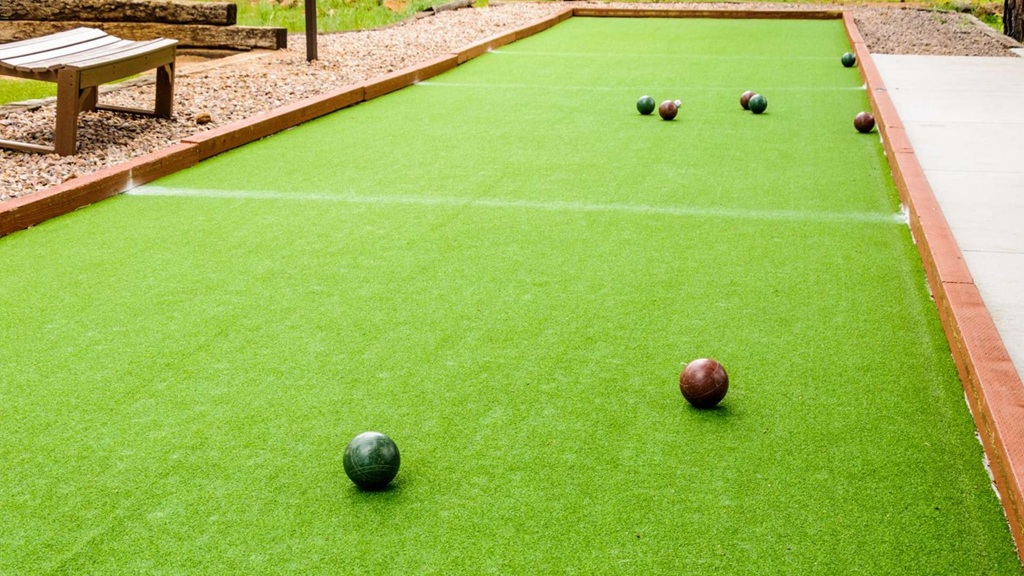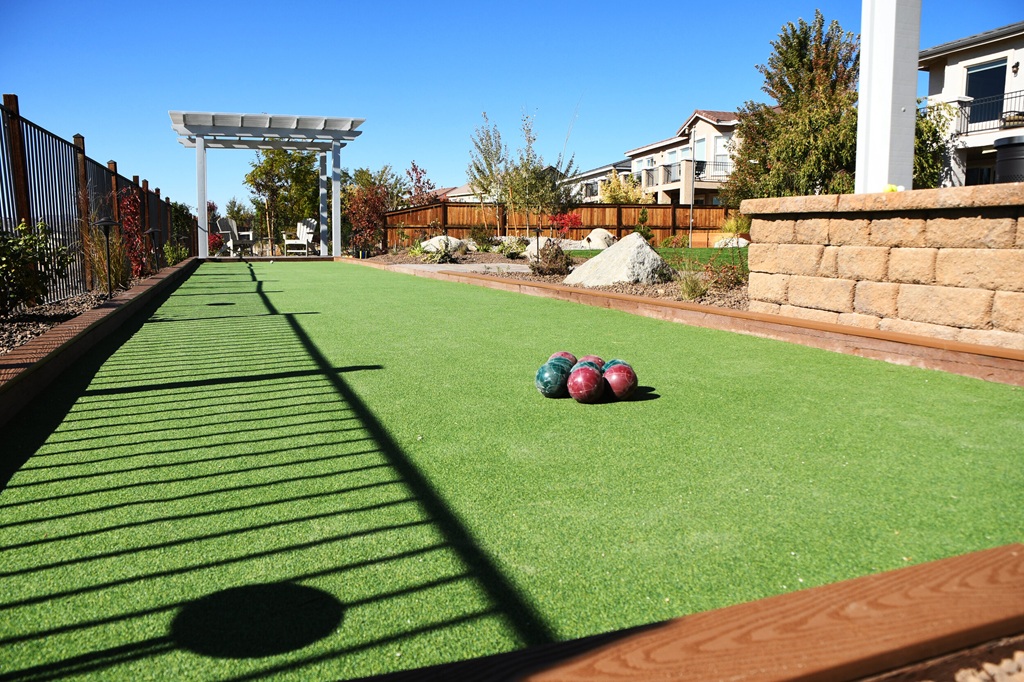
Bocce ball, a sport with roots stretching back to ancient empires, has experienced a delightful resurgence in recent years. No longer relegated to dusty retirement communities, it’s now a staple of backyard barbecues, park gatherings, and even competitive leagues. This simple yet surprisingly strategic game offers a blend of skill, social interaction, and leisurely fun, making it accessible to players of all ages and abilities. But to truly appreciate and enjoy bocce, understanding the court dimensions and the nuances of gameplay is essential.
Understanding the Bocce Ball Court: Precision and Playability
The standard bocce court, as defined by international governing bodies, is rectangular, designed to provide a fair and consistent playing surface. While variations exist for recreational play, adhering to these dimensions ensures a more authentic and competitive experience.
Official Court Dimensions: The Standard of Play
The official court measures approximately 86.92 feet (26.5 meters) in length and 13.12 feet (4 meters) in width. This translates to a playing area of roughly 1140 square feet. The length is crucial for strategic throws, allowing for both short, precise deliveries and longer, more forceful attempts. The width provides ample space for players to maneuver and position themselves for optimal shot execution.
Court Surface and Construction: Ensuring a Consistent Roll
The surface of a bocce court is a critical factor in determining the game’s flow and fairness. Traditionally, courts are constructed with a compacted surface of crushed stone or oyster shell, providing a firm, level, and relatively smooth playing field. Modern courts may utilize synthetic materials or finely graded clay, offering similar playing characteristics.
The court is typically enclosed by sideboards or barriers, preventing the bocce balls from rolling too far afield and maintaining the playing area’s integrity. These barriers also play a role in strategic play, as skilled players can use them to bank or ricochet their balls towards the pallino or other target balls.
Recreational Court Variations: Flexibility and Accessibility
While official dimensions are essential for competitive play, recreational bocce courts can vary in size to accommodate available space and player preferences. Backyards, parks, and indoor facilities may feature shorter or narrower courts, allowing for more casual games. A common recreational size is 60 feet in length and 12 feet in width. These variations are perfectly acceptable for fun, social gatherings and introduce the sport to a wider audience.
The key considerations for any bocce court, regardless of size, are flatness, consistency, and a well-defined boundary. Ensuring a level playing surface minimizes unpredictable rolls and allows players to focus on their technique. The boundary ensures that all throws are made within the designated area, maintaining the game’s structure.
The Game Itself: Strategy, Skill, and a Dash of Luck
Bocce is a game of simple rules but complex strategies. The objective is to get your bocce balls closer to the pallino (the small target ball) than your opponent’s balls. This requires a combination of throwing accuracy, strategic thinking, and a bit of luck.
Gameplay Basics: From Pallino to Point Scoring
The game begins with a toss of the pallino, which determines the target position. Players then take turns throwing their bocce balls, attempting to land them as close as possible to the pallino. The first player to throw is decided by a coin flip, and then alternating teams throw.
Players can employ various throwing techniques, including rolling, lofting, and even banking their balls off the sideboards. Skilled players learn to control the speed, trajectory, and spin of their throws, allowing them to precisely place their balls.
After all eight bocce balls have been thrown, the team with the ball closest to the pallino scores a point. Additional points are awarded for each of their balls that are closer to the pallino than the opponent’s closest ball. The scoring team throws the pallino in the next round. Games are typically played to 12 or 13 points.
Related: Building the Ultimate Game Room and Entertainment Space
Strategic Elements: Beyond Simple Throws

Bocce is more than just rolling balls. It involves strategic thinking and tactical decisions. Players must consider the position of the pallino, the location of their own and their opponent’s balls, and the available throwing options.
- Pointing: Placing a ball close to the pallino, establishing a strong position.
- Bocce: Striking an opponent’s ball to move it away from the pallino.
- Lofting: Throwing a ball high in the air to land near the pallino or bypass obstacles.
- Banking: Using the sideboards to ricochet a ball into a desired position.
These strategic elements add depth and complexity to the game, making it engaging for players of all skill levels.
Social Aspect: Bringing People Together
Bocce is inherently a social game, fostering interaction and camaraderie among players. It’s a sport that can be enjoyed by people of all ages and abilities, making it perfect for family gatherings, community events, and friendly competitions. The leisurely pace of the game allows for conversation and laughter, creating a relaxed and enjoyable atmosphere.
Related: Outdoor Oasis: Creating a Stunning Exterior Design!
To further enhance your understanding of bocce, let’s address some frequently asked questions:
What are the official dimensions of a bocce ball?
Official bocce balls have a diameter of approximately 107mm (4.21 inches) and a weight of around 920 grams (2.03 pounds). These specifications may vary slightly depending on the manufacturer and the level of play. Recreational sets may feature smaller or lighter balls.
How do you determine who throws the pallino?
Typically, a coin flip determines which team throws the pallino first. The winning team throws the pallino and the first bocce ball. In subsequent rounds, the team that scored in the previous round throws the pallino.
Can you hit the pallino with a bocce ball?
Yes, you can intentionally hit the pallino with a bocce ball. This is a common tactic used to reposition the pallino and gain a strategic advantage. However, if the pallino is moved outside of the court’s boundaries, the round is restarted.
What happens if a bocce ball goes out of bounds?
If a bocce ball goes out of bounds, it is removed from play and does not count towards the scoring. The player who threw the ball loses their turn.
How do you measure which bocce ball is closest to the pallino?
Measuring devices, such as measuring tapes or calipers, are used to determine which bocce ball is closest to the pallino. If the distance is too close to call, a referee or designated official may be consulted to make a final decision.
What are some tips for improving my bocce game?
- Practice your throwing technique, focusing on accuracy and consistency.
- Develop a strategic approach, considering the position of the pallino and other balls.
- Learn to use different throwing techniques, such as lofting and banking.
- Pay attention to the court surface and adjust your throws accordingly.
- Communicate with your teammates and coordinate your strategies.
- Most importantly, have fun and enjoy the social aspect of the game.
Conclusion: Bocce – A Timeless Game for Everyone
Bocce ball, with its rich history and simple yet engaging gameplay, offers a delightful blend of skill, strategy, and social interaction. Understanding the court dimensions and the nuances of the game allows players to fully appreciate its depth and complexity. Whether you’re playing on an official court or a backyard variation, bocce provides an opportunity for friendly competition, laughter, and lasting memories. The game’s accessibility and adaptability make it a timeless pastime that can be enjoyed by people of all ages and abilities. So, grab a set of bocce balls, gather your friends and family, and experience the joy of this classic sport. The strategic depths of the game combined with its social aspects ensures it will be enjoyed for generations to come.







